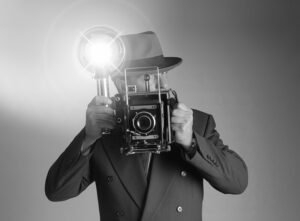Introduction
Shooting photos indoors can present unique challenges, primarily due to lighting conditions. One way to tackle this issue is by using an on-camera flash. But using flash effectively requires a delicate balance to achieve well-lit images without the harsh shadows or overexposure often associated with flash photography. This guide will provide you with essential tips to take fantastic indoor photos with an on-camera flash.
1. Bounce the Flash
Direct flash can create harsh shadows and give your subjects an unflattering, washed-out appearance. One solution is to bounce the flash off a nearby surface like a wall or ceiling. This technique diffuses the light, softening shadows and creating a more natural look. Digital Photography School, provides an in-depth guide on how to effectively bounce your flash.
2. Use a Flash Diffuser
A flash diffuser is a simple tool that spreads the light from your flash over a larger area, reducing harsh shadows and creating softer, more natural lighting. Diffusers come in various types, like softboxes, bounce cards, or domes, and there are many options available online on platforms like Amazon.
3. Adjust the Flash Exposure Compensation
Just as your camera has an exposure compensation setting, so does your flash. This feature allows you to increase or decrease the intensity of the flash. If your images are coming out too bright, try lowering the flash exposure compensation, and if they’re too dark, increase it. Websites such as Photography Life provide a clear explanation of how to use this feature effectively.
4. Experiment with Slow Sync Flash
Slow sync flash is a technique where you use a longer shutter speed in combination with a flash. This method allows you to capture the ambient light in the background while freezing your subject with the flash. It’s great for creating dynamic images or for shooting in low light conditions. The Adorama Learning Center has a comprehensive guide on using slow sync flash.
5. Understand Flash Sync Speeds
Your camera’s flash sync speed is the fastest shutter speed at which your camera can use flash. If you exceed this speed, you may see a black band on your photo, which is part of the camera’s shutter. Check your camera’s manual or The School of Photography for a detailed explanation of flash sync speed.
6. Consider Off-Camera Flash
For more control over the direction and quality of your light, consider using off-camera flash. By moving your flash off the camera, you can experiment with different lighting setups and achieve more professional-looking results. Websites like Strobist provide free tutorials for getting started with off-camera flash.
Conclusion
Using flash effectively can significantly improve your indoor photography. With these tips and some practice, you’ll be on your way to creating beautifully lit indoor photos. Keep in mind that mastering flash photography takes time, so be patient and enjoy the learning process.
For more advanced learning, there are various online courses available, like those offered by The School of Photography in Australia, that cover a range of photography techniques, including flash photography.




